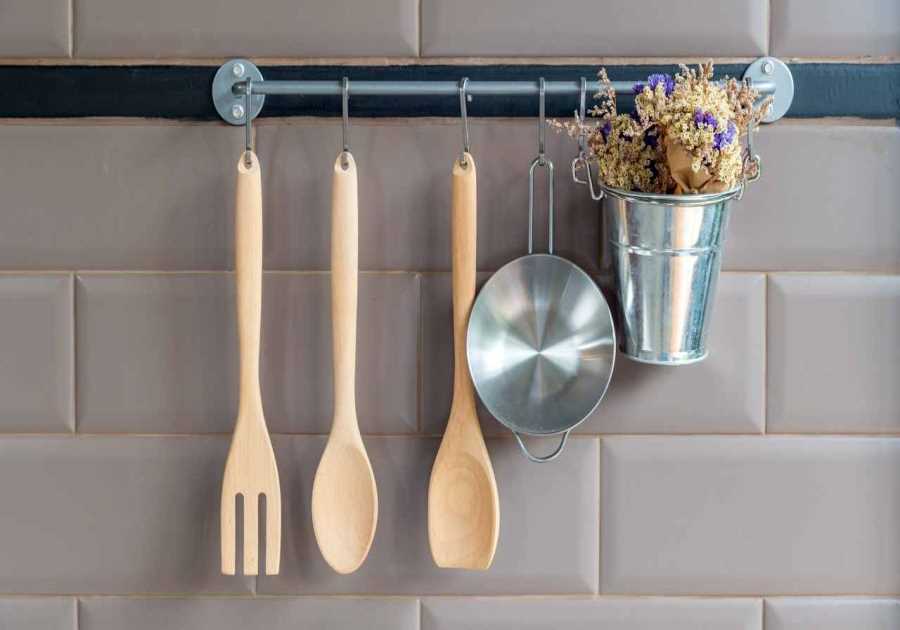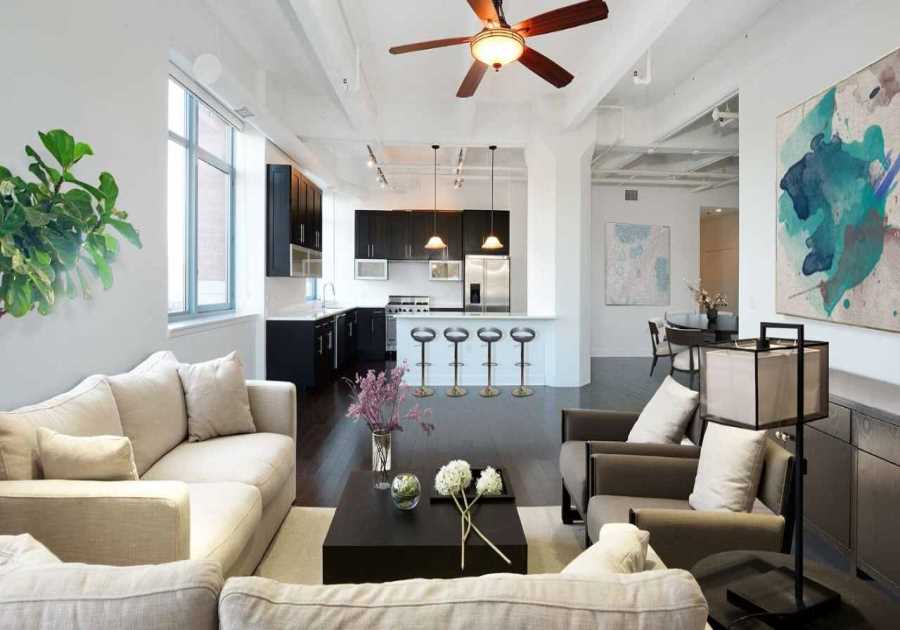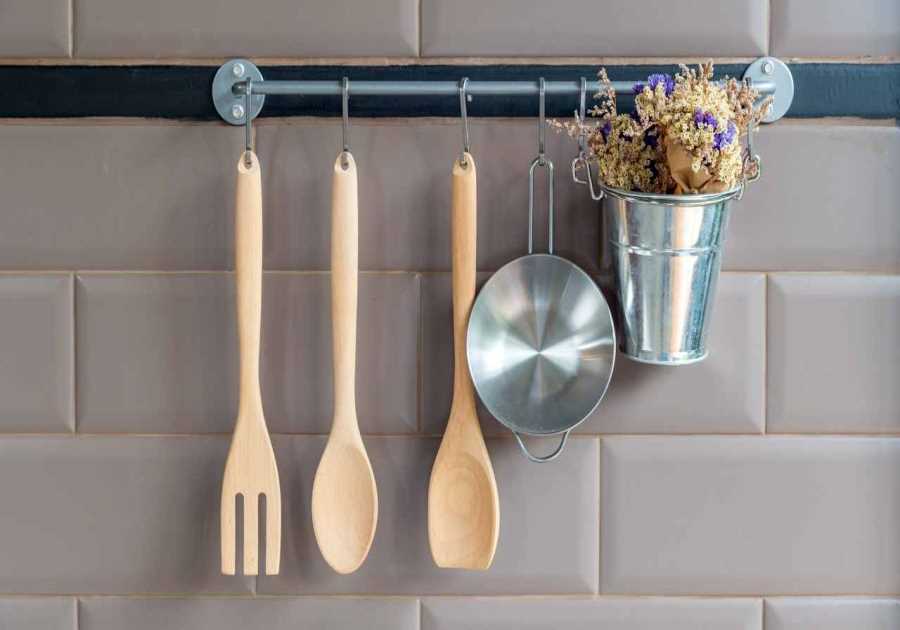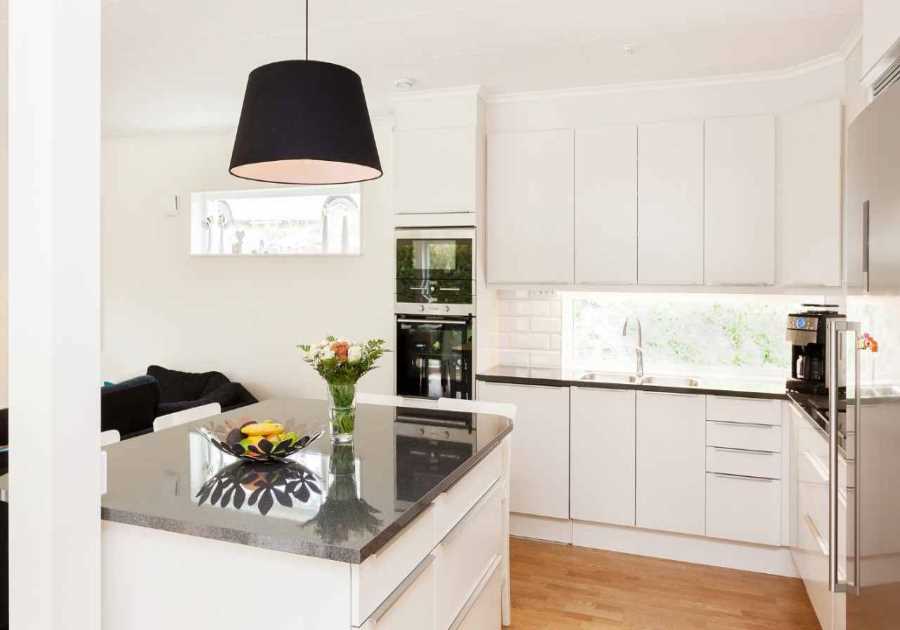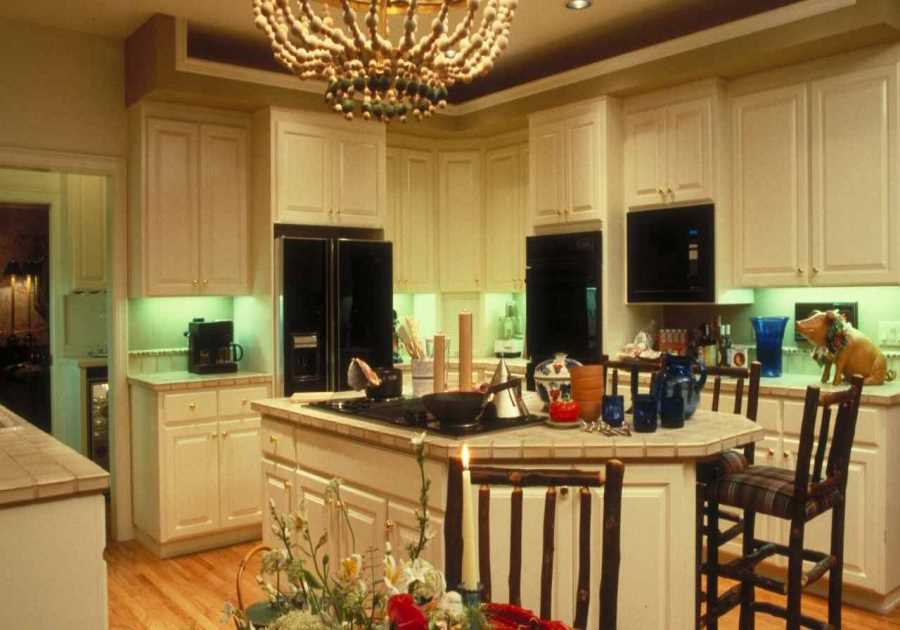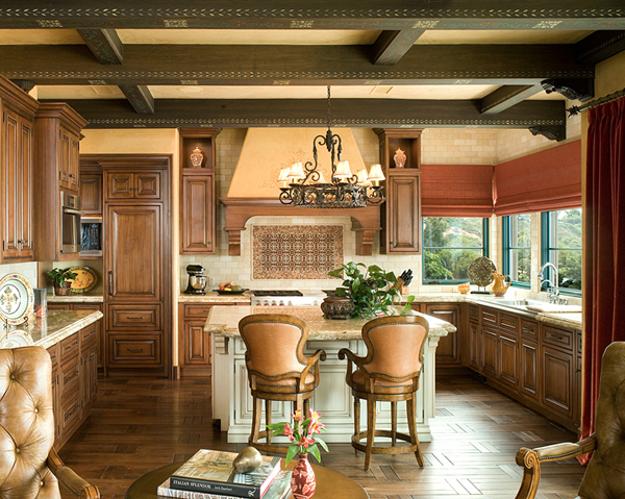
How to create a stunning Mediterranean kitchen that will make your neighbours jealous.
Welcome to the wonderful world of Mediterranean kitchen design! If you’re looking to add glamour, style and pizzazz to your home – creating a stunning Mediterranean kitchen is the perfect way to do just that.
From bright colours such as yellow, orange and red to terracotta tiles and wooden accents, this type of kitchen design is unique and will make your neighbours jealous.
By combining the classic colours of the Mediterranean with modern materials and finishes, you can create a timeless style that looks fresh and inviting. Your guests will immediately be drawn into the rich warmth of your beautiful Mediterranean kitchen.
Start by choosing bold and vibrant wall paint colours as the foundation for your design. Think light yellows, oranges and pinks – these will instantly create that warm Mediterranean atmosphere in any room. Then add character with decorative tile patterns. Choose from hand-passed terracotta or glossy hexagons for an eye-catching effect in any space. For a modern look, choose sleek black or white tiles to slightly offset any strong colour palette you may have chosen.
And don’t forget accent pieces like brightly coloured rugs and artwork as another great way to bring out those perfect Mediterranean hues. Choose bright blues for that oceanic feel or subtle greens for a more natural look. These touches are what make a space come alive!
But it doesn’t just end there; don’t forget those timelessly rustic features such as exposed brick walls or wooden beams used especially common in homes around the Mediterranean region - these additions almost act as architectural statement pieces - adding character to an already stylishly designed room as well as traditional furniture choices crafted from natural materials such as rattan chairs or hemp seat cushions made with leather details, add that final charming touch!
Colours
A rich colour palette and high-end finishes characterize Mediterranean kitchen colours. Those who opt for this style look for a welcoming, relaxing atmosphere. This design is particularly attractive to those who love bright, vibrant colours. It also provides ample light to the space.
Often, a Mediterranean kitchen features large arched windows with wrought iron details. These windows bring natural light into the space. The room also has a high ceiling. Full-height cabinets give the kitchen an open feel. A tiled backsplash adds texture and depth to the space.
Mosaic tiles are key elements in the Mediterranean kitchen. These tiles can be made of ceramic, glass or marble. They can be used in the kitchen island as well as the backsplash. In addition, there are also mosaic tiles painted with ornate motifs.
Texture
Regarding kitchen design, the Mediterranean style uses natural materials and textures. These materials and textures add depth to the space. You can easily create a Mediterranean feel in your home with textured walls, ceilings and floors. Choosing the right colour palette can help you achieve the perfect look.
The colour palette in a Mediterranean-style kitchen can include earthy tones such as reds, browns and oranges. It also offers a wide range of rich yellows, blues, and turquoise. A tiled backsplash can also tie the colour scheme together.
Adding a little texture to a Mediterranean kitchen can be done by painting a few wall surfaces in various colours. Smooth Venetian plaster can give your walls a textured finish. Or you can choose a more rugged stucco finish.
Lighting
Mediterranean-style lighting is an important aspect of kitchen design. It can be simple and streamlined or more sophisticated and elaborate. The key is choosing the right fixtures for your space. You don't want any light fixtures to block your view of the room's features.
A Mediterranean kitchen design has plenty of colour and texture. This warm colour scheme works well with various materials, from hardwood floors to brick. Walnut works well with a lighter colour scheme. For a more rustic look, opt for reclaimed wood.
To add a touch of Mediterranean style, consider wrought iron pendant lights. These complement the dark wood island and ceiling beams. They also add a bit of metallic lustre to the room.
Large arched windows can help a room receive natural light. Arched openings are a common feature in Mediterranean decor. Another helpful tip is to use open shelving to lighten the room.
Curvy architectural features
A Mediterranean kitchen is a classic design perfect for people who prefer a bright and welcoming ambiance. This design style takes inspiration from traditional country-style kitchens and blends it with modern design. Using cabinets, high-end finishes, and larger elements such as kitchen islands, this kitchen design appeals to homeowners who love the look and feel of the traditional kitchen.
Contemporary Mediterranean kitchens feature a bold combination of warm colours. This style of the kitchen also uses a variety of wood finishes, making the space a rich and elegant.
Traditionally, Mediterranean kitchens use terracotta ceramic floor tiles. These tiles are irregularly shaped and matched perfectly to the Mediterranean aesthetic. The textured tile adds to the room's beauty and gives it a subtle warm glow.
Embrace contrast between different design elements to keep things modern
When designing your next Mediterranean kitchen, embrace the contrasting design elements. This will help you to keep things modern. Adding contrast to your design will also add visual weight to the room.
An excellent way to achieve this is by using a detailed ceiling. It can be a big project, so research and consult your architect.
Another homage to the Mediterranean style is to use of hand-painted tiles. They are a fun way to give your space personality and a touch of class. These tiles are available in a wide variety of colours and styles.
You can even create an eye-catching focal point by adding a mosaic tile in a bright colour to your backsplash. Tiles come in various materials, including ceramic, glass, and porcelain.
Frequently Asked Questions
How long should a kitchen renovation take?
Once the cabinets are manufactured, the process should take around three weeks. However, it can take months to design or manufacture custom cabinets. This means that the whole process from start-to-finish can take several weeks.
Where should pots and pans go in the kitchen?
Pots and pans are best kept in the cupboard above the stove. This keeps them in reach when you need them. It also makes your kitchen counters look neat and clean. A pot rack can also be a great investment to keep your pots and saucepans organized and easily accessible.
What's the first step to renovate a kitchen?
This is a difficult question to answer because every kitchen remodeling project is different. Each one will require a different approach. It is essential to have a clear understanding of your unique goals and needs before designing a new kitchen.
This may involve meeting with a professional designer or architect to discuss your ideas, taking measurements of your current kitchen space, and/or creating a mood board or inspiration folder with images of kitchens that appeal to you.
Once you have an idea of your goals, you can start planning your budget and getting estimates from potential contractors. To avoid stress and keep your kitchen renovation on schedule, it is essential to create a timeline.
Working with an architect or professional kitchen designer will allow them to take charge of the design planning. It's important that you know your goals and what you need from the beginning. This will ensure that the final design meets all your expectations and that you are happy with the result.
You should measure your kitchen space in terms of its overall area and the dimensions of the individual areas such as countertops, cabinets, appliances and windows. It would be best if you also noted any existing structural elements that cannot be removed, such as support beams or load-bearing walls. It is helpful to draw a floor plan layout in order to visualize how your new design will look.
A mood board or inspiration folder is great for narrowing your kitchen design ideas. Pinterest is a great resource for images of kitchens that you like, so take some time to browse there. You can also cut out pages from magazines to collect fabric swatches, paint chips and other visual elements that you like. This information will come in handy when planning your next renovation.
Once you have an idea of the look you want, you can start to plan your budget and timeline. How much do you have to invest in this project? What are your must-haves and what are the nice-to-haves. When are you ready for the renovations to begin? These questions will help guide you through the planning process.
You'll need to include the cost of materials such as cabinets, countertops and appliances if you decide to remodel your kitchen. You'll also want to consider the time it will take to complete the project and any potential disruptions to your daily routine. A contractor will provide a detailed estimate with all costs and a schedule for completion if you are hiring them.
To avoid stress and keep your kitchen renovation on schedule, it is essential to create a timeline. Once you have an idea about when each step should take place, you will be able to begin to plan a more detailed schedule. To avoid any unanticipated delays, you should be flexible about your timeline.
These steps will help you create a plan for your kitchen remodel. This will allow you to ensure the end result is what you want and the entire process goes smoothly.
Can a white kitchen be a good idea in Vancouver's climate?
Vancouver homeowners love white kitchens. This is because they are brightening up the space and creating a modern appearance. To bring warmth into your space, however, you should consider natural elements such wood as there isn't much sunshine in Metro Vancouver.
What are my options for planning a new kitchen?
There are many choices, no matter if you're renovating an existing space, or building a dream kitchen.
Before you start, take some time to look online for inspiration. Look for photos of kitchens that inspire you. Keep track of design ideas. Next, take some notes and use a pen and paper to determine exactly where each element should be placed.
Now, think about how you can improve upon these spaces. What could you change? What would your ideas be? Ask someone who is an expert in your field to help you get creative.
Once you know what you want to achieve, it's now time to start. Start with the basics. Get rid of all unnecessary clutter. Remove appliances that aren't used often. Replace old fixtures with newer models.
Next, take a look at areas of your kitchen that are too small. This is where you need to find storage and countertops. Consider how you can make the most of these spots. Perhaps you could turn them into wine cellars and pantries.
Lighting is an important consideration. Is there a particular spot that could use more light? Perhaps a wall sconce would help brighten up a dark corner.
After you have made your list of improvements it is time to start the fun part: implementing them.
Don't be discouraged if you don’t know everything the first time. Continue to work until you are confident. Remember that no project is complete if you don't enjoy using it every day.
Statistics
- Your most significant cost investment for a kitchen remodel will usually be cabinets, typically comprising 25 percent of your budget. (hgtv.com)
- Followed by cabinet cost, labour, and appliance costs consume 20 percent each of your budget. (hgtv.com)
- Keep 10 to 25 percent of List 2, depending on the budget. (familyhandyman.com)
- According to Burgin, some hinges have this feature built-in, but it's an add-on cost for other models of about $5 retail, adding up to $350 to $500 for an entire kitchen, depending on size. (hgtv.com)
- Experts also recommend setting aside 20 percent of your budget for surprises, including unpleasant demolition discoveries. One is water damage, the electricity that is not up to code, or other budget-spiking gotchas. (hgtv.com)
External Links
thespruce.com
homeguide.com
houzz.com
forbes.com
How To
How do I choose a kitchen contractor?
These tips will assist you in making a decision about a Kitchen Remodel contractor.
- Ask your friends for feedback on their experiences working with contractors. This is a great opportunity to get honest feedback from those who are familiar with the contractors. Ask them about the work quality, professionalism, cleanliness, punctuality, etc. Ask them if they have had any issues with the contractor. If they had problems with the contractor, how did they solve them?
- Reach out to several companies to request estimates for your project. Give a detailed description of the project and explain why it is important to you to hire someone else. You can also tell them that you are looking for someone who is skilled in kitchen remodeling. Also, you can include information about the space, such as the dimensions and the materials used. Make sure you tell them what type of finish you would like (e.g. countertops, cabinets backsplash, flooring). Don't forget to mention anything specific that you would like done during the project. Do you need new appliances? Do you prefer a particular type of cabinetry or style? Are there any unique features, such as a wine refrigerator?
- Determine if the company offers worker's insurance. You can check online to find out if the contractor is a member of any trade associations. It is always a good idea to partner with a reputable company.
- To discuss your project, schedule a meeting with the contractor. Ask about their experience and qualifications. Find out how they approach your project and what type of timeline they plan to use.
- Refer to previous clients for references. You shouldn't just trust a contractor; get references. Call the recommended people from his reference list. You can reach them by calling the people he recommends.
- You can see past customer reviews on sites such as Yelp, Angie's List and Houzz. These sites are popular for homeowners who want to leave feedback after they've completed projects. Positive reviews will assure you that you get a good job.
- A kitchen designer can help you create a plan to remodel your kitchen. A professional designer will know what looks best in your kitchen. The latest trends in kitchen design will be mastered by the designer.
.png)
